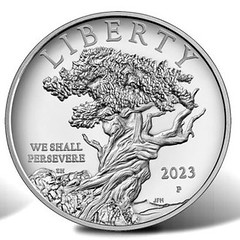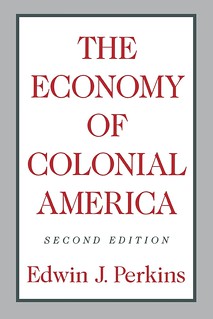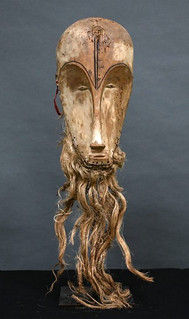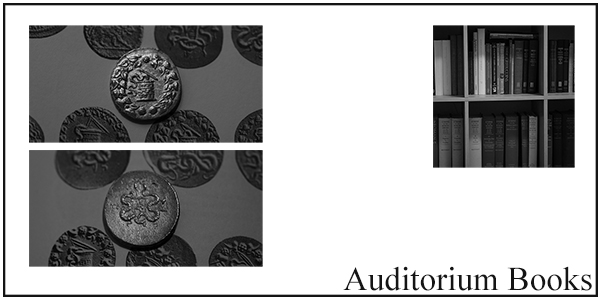
PREV ARTICLE
NEXT ARTICLE
FULL ISSUE
PREV FULL ISSUE
NOTES FROM E-SYLUM READERS: OCTOBER 15, 2023
We Shall Persevere Last week I asked about the "We Shall Persevere" motto on the 2023 American Liberty silver medal' -Editor "I have not found a statement from the Mint indicating the source.
"Mr. Google says the quote is from CAA Savastano.
"The Newman Numismatic Portal shows only one usage. That was from a 1969 report from the Secretary of the Treasury. (You can look it up) "Then there was John Cotton Smith who wrote this in 1812." Thanks. "We Shall Persevere" makes a great motto. Here's a great Washington Post article about a family's perseverence following a tragedy. -Editor
But what choice do I — really all of us — have but to persevere? To take the call knowing it might be news of a death or a voice from Stockholm.
To read the complete article, see:
To read the earlier E-Sylum article, see:
On the Value of Union and Confederate Currency "I received your contact information from the Massachusetts Historical Society after contacting them about the value of currency for the Union and Confederacy. I am writing a story set in December of 1864 in Texas. I am wanting to incorporate accurate information regarding the cost of goods and services during this time, such as the price of a gallon of milk, a pound of flour, and the cost of a train ticket to travel approximately 300 miles. I am also interested in the difference between the value of currency between the Union and the Confederacy. For instance how much did a loaf of bread or a ton of coal cost in the Union vs. the Confederacy. "Thank you for any help you can provide in this regard!" My interest in Civil War numismatics was as a collector, and I wasn't able to address her questions about the economics. I did reach out to economist JP Koning, who offered to check his references to see if he could help. Thank you. Can any of our readers assist? -Editor
Review: The Economy of Colonial America On a related note, over on the Colonial Coins mailing list, people were discussing a book about a similar topic in the colonial era. -Editor
"I recently finished a book that was recommended on this group: Jeff Rock writes: "I also recommend John McCusker's book on the subject, which is used more for college level courses but still a fascinating read."
On Dealer Ethics "About 8 to 12 years ago there was a trend of buying sprees of Dealers who set up at local hotels and take out 1 or 2 page ads in the local paper and sometimes radio ads. Diamonds, gold, coins, watches, and currency that were just gathering dust was what was wanted. "I conducted a test in which two coins (a 1854 J160 pattern cent, Pf 63, and a 1872CC 50C, AU) were placed in OLD envelopes and taken to the event. The first one yielded an offer of about 5 cents on the dollar. The second about two years later yielded an offer of about 8 cents on the dollar. Coins used this time were pattern dimes in OGH and PF 64 and 65. "Both dealers were members of the ANA, PNG, and most other organizations. Each story was shared with fellow coin club members. "I'm not a Dealer and prefer the acquisition process. Seller beware." Scott Semens writes: "Just before reading that piece in E-Sylum, I was watching the Album book sale mentioned in the same issue, lot by lot, as snipers chased the popular titles with last minute bids. A few obscure titles languishing at my website went for multiples of what I am asking for them, while others brought less than my cost from the publisher. How crazy auctions can be! I think this may be another example of the same phenomenon.
"I agree the dealer was being generous when he offered to rebate the sellers a significant sum in retrospect. What we are not seeing here are the objects this dealer bought over the years in good faith and later found out were forgeries, or not worth what he paid, just like the book titles a dealer has to sell at a loss because a subsequent publication or other factors reduce the value. Dealers have to work on the averages. Be happy when a
To read the earlier E-Sylum article, see:
On the Numismatic Proof Scale "I much appreciated Jerry Nashorn's comments on the Proof Scale. I feel it's an important component in the counterstamp database I built. I'm hopeful that this database may eventually be made available to collectors, via the NNP. It's a useful tool, given the many probable and "slam-dunk" positive attributions I've been able to make over many years now. I'm constantly updating it as I gather new info. Another benefit is that reports can be generated to show trends relative to locations, host coins, occupations, dates, populations, etc. There's a great deal to as yet be studied and learned about this practice. "On another note, Jerry wrote that, " .... his (my) approach seems to be to buy the coin first and then do the research." For the record, my approach is completely the opposite. I always try to do the research BEFORE making a purchase. Back in the eighties and nineties, I had no internet to do research. All I had were the public libraries and the Brunk/Rulau books which had many unfounded attributions. As Philadelphia was a hub of c/s activity, I once spent a week in the library there, looking at microfilm and early directories. I did likewise in Chicago for a week; these, among other northeast locations. Study is essential for proper attribution. "Back then, I winged it at shows, occasionally buying lot groups. Given time constraints, doing research on these purchases wasn't possible. I had to go on intuition and "my eye" for spotting attributable c/s's. Nowadays, with eBay and other auctions, there's plenty of time to study the c/s's. Some of the bigger auction houses sell lots that consist of groups of c/s's. Of course, if there's a good one or two c/s's in a single lot, I've been obliged to buy it as such. Like Jerry and other serious numismatists, I do try to be discriminating in my purchases, circumstances permitting. "Many collectors, especially those who are keenly condition-conscious, liken the counterstamping of coins to a crime. Along that line, I've adopted the attitude of a crime-solver, a detective. I study the evidence at hand. Some is circumstantial like the size and style of the stampings, peculiarities like the use of stops or periods. the positioning of the stamping, etc. These forensic aspects offer clues, positive and/or circumstantial. Some of my best attributions have been made with naught but a single surname as evidence. For collectors who relish thinking out-of-the-box, studying counterstamps can be a fun and challenging pursuit." I agree! I collected these for years and had great fun acquiring them. Research is somewhat easier these days with internet sources, especially newspaper archives. -Editor
To read the earlier E-Sylum article, see:
Wayne Homren, Editor The Numismatic Bibliomania Society is a non-profit organization promoting numismatic literature. See our web site at coinbooks.org. To submit items for publication in The E-Sylum, write to the Editor at this address: whomren@gmail.com To subscribe go to: https://my.binhost.com/lists/listinfo/esylum All Rights Reserved. NBS Home Page Contact the NBS webmaster 
|




